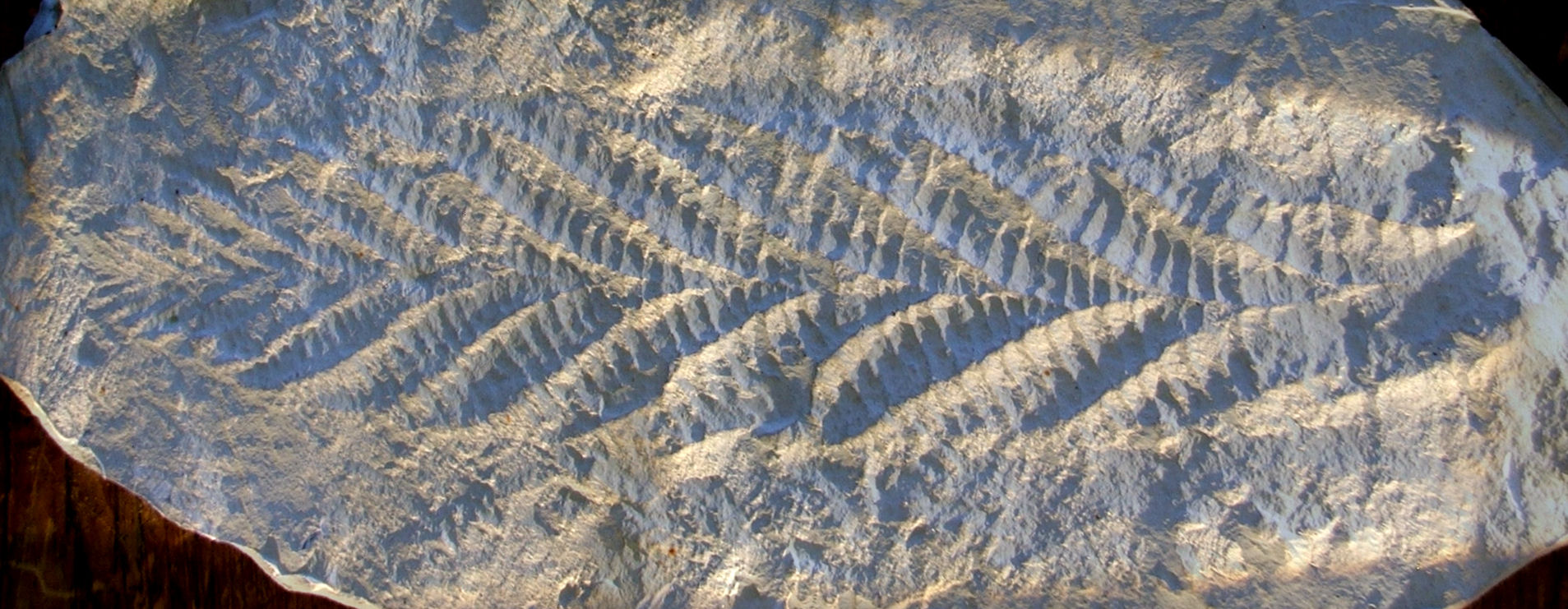|
Scolicia
''Scolicia'' de Quartrefages, 1849 is a parataxon of ichnofossils present in sedimentary rocks of marine, marginal lacustrine, alluvial, or fluvial facies. These fossil traces appear in a wide geological range, from the Cambrian The Cambrian Period ( ; sometimes symbolized Ꞓ) was the first geological period of the Paleozoic Era, and of the Phanerozoic Eon. The Cambrian lasted 53.4 million years from the end of the preceding Ediacaran Period 538.8 million years ag ... to the present. ''Scolicia'' traces appear as horizontal, bilaterally symmetrical, meandering trails, variably shaped, ridgelike or ribbon like, about 1-5 centimeters wide. The trail consists of two parallel and identical in width stripes with variable trasversal ribs and a central channel. Although the term ''Scolicia'' is the most common for this type of trails or burrows in some cases, when the transverse ribbing is not very clear, it is used for the positive impression (epirelief) the term ''Palaeo ... [...More Info...] [...Related Items...] OR: [Wikipedia] [Google] [Baidu] |
Jean Louis Armand De Quatrefages De Bréau
Jean Louis Armand de Quatrefages de Bréau (10 February 1810 – 12 January 1892) was a French biologist. Life He was born at Berthézène, in the commune of Valleraugue ( Gard), the son of a Protestant farmer. He studied science and then medicine at the University of Strasbourg, where he took the double degree of M.D. and D.Sc., one of his theses being a ''Théorie d'un coup de canon'' (November 1829); next year he published a book, ''Sur les arolithes'', and in 1832 a treatise on ''L'Extraversion de la vessie''. Moving to Toulouse, he practised medicine for a short time, and contributed various memoirs to the local ''Journal de Médecine'' and to the ''Annales des sciences naturelles'' (1834—36). But being unable to continue his research in the provinces, he resigned the chair of zoology to which he had been appointed, and in 1839 settled in Paris, where he found in Henri Milne-Edwards a patron and a friend. Elected professor of natural history at the Lycée Napoléon in 1 ... [...More Info...] [...Related Items...] OR: [Wikipedia] [Google] [Baidu] |
Parataxon
Form classification is the classification of organisms based on their morphology, which does not necessarily reflect their biological relationships. Form classification, generally restricted to palaeontology, reflects uncertainty; the goal of science is to move "form taxa" to biological taxa whose affinity is known. Form taxonomy is restricted to fossils that preserve too few characters for a conclusive taxonomic definition or assessment of their biological affinity, but whose study is made easier if a binomial name is available by which to identify them. The term "form classification" is preferred to "form taxonomy"; taxonomy suggests that the classification implies a biological affinity, whereas form classification is about giving a name to a group of morphologically-similar organisms that may not be related. A "parataxon" (not to be confused with parataxonomy), or "sciotaxon" (Gr. "shadow taxon"), is a classification based on incomplete data: for instance, the larval stage o ... [...More Info...] [...Related Items...] OR: [Wikipedia] [Google] [Baidu] |
Ichnofossil
A trace fossil, also known as an ichnofossil (; from el, ἴχνος ''ikhnos'' "trace, track"), is a fossil record of biological activity but not the preserved remains of the plant or animal itself. Trace fossils contrast with body fossils, which are the fossilized remains of parts of organisms' bodies, usually altered by later chemical activity or mineralization. The study of such trace fossils is ichnology and is the work of ichnologists. Trace fossils may consist of impressions made on or in the substrate by an organism. For example, burrows, borings (bioerosion), urolites (erosion caused by evacuation of liquid wastes), footprints and feeding marks and root cavities may all be trace fossils. The term in its broadest sense also includes the remains of other organic material produced by an organism; for example coprolites (fossilized droppings) or chemical markers (sedimentological structures produced by biological means; for example, the formation of stromatolites). Ho ... [...More Info...] [...Related Items...] OR: [Wikipedia] [Google] [Baidu] |
Sedimentary Rock
Sedimentary rocks are types of rock that are formed by the accumulation or deposition of mineral or organic particles at Earth's surface, followed by cementation. Sedimentation is the collective name for processes that cause these particles to settle in place. The particles that form a sedimentary rock are called sediment, and may be composed of geological detritus (minerals) or biological detritus (organic matter). The geological detritus originated from weathering and erosion of existing rocks, or from the solidification of molten lava blobs erupted by volcanoes. The geological detritus is transported to the place of deposition by water, wind, ice or mass movement, which are called agents of denudation. Biological detritus was formed by bodies and parts (mainly shells) of dead aquatic organisms, as well as their fecal mass, suspended in water and slowly piling up on the floor of water bodies ( marine snow). Sedimentation may also occur as dissolved minerals precipita ... [...More Info...] [...Related Items...] OR: [Wikipedia] [Google] [Baidu] |
Cambrian
The Cambrian Period ( ; sometimes symbolized Ꞓ) was the first geological period of the Paleozoic Era, and of the Phanerozoic Eon. The Cambrian lasted 53.4 million years from the end of the preceding Ediacaran Period 538.8 million years ago (mya) to the beginning of the Ordovician Period mya. Its subdivisions, and its base, are somewhat in flux. The period was established as "Cambrian series" by Adam Sedgwick, who named it after Cambria, the Latin name for 'Cymru' (Wales), where Britain's Cambrian rocks are best exposed. Sedgwick identified the layer as part of his task, along with Roderick Murchison, to subdivide the large "Transition Series", although the two geologists disagreed for a while on the appropriate categorization. The Cambrian is unique in its unusually high proportion of sedimentary deposits, sites of exceptional preservation where "soft" parts of organisms are preserved as well as their more resistant shells. As a result, our understanding of the Cambria ... [...More Info...] [...Related Items...] OR: [Wikipedia] [Google] [Baidu] |


